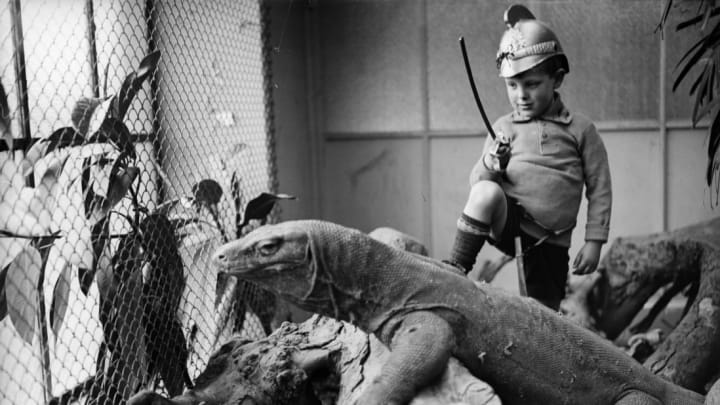For children of the '70s and '80s, befriending a playful green dragon was the ultimate childhood fantasy. After all, if meek little Pete could have his own dragon, Elliot, why couldn’t we? Well, Pete’s Dragon is back on the big screen and this time we know better: Dragons do exist. Here are six places you can find them today.
1. KOMODO DRAGON // INDONESIA
Known as the "world’s largest dragon," Komodo dragons are the closest we’ll come to Pete’s Dragon, Elliot. They can grow up to three meters long and weigh up to 150 pounds. With razor-sharp teeth and a venomous bite (recent studies have shown that the "bacteria bite" is probably a myth and they are just regularly venomous), Komodo dragons kill pigs, deer, and water buffalo, so remember: This dragon is not your friend.
Indigenous to Indonesia, Komodo dragons can be found on the Komodo, Rintja, Padar, and Flores islands. But the safer way to see a Komodo Dragon is from afar, be it on an Indonesian Komodo Dragon Safari Cruise or at many zoos across the U.S., like Seattle's Woodland Park Zoo or the Smithsonian's National Zoo in Washington D.C., where the first-ever Komodo eggs were hatched outside of Indonesia.
2. RUBY SEADRAGON // WESTERN AUSTRALIA
Last year, biologists from the Scripps Institution of Oceanography uncovered a new species of underwater dragon: the Ruby Seadragon. They found this ruby-red gem of a dragon accidentally while studying the similar Leafy and Weedy Seadragons.
Located in remote waters off the Western Australian coast, the Ruby Seadragons are still relatively new to the scene, and incredibly tough to spot. But, if you’re ready to accept the challenge, find inspiration in Scripps biologist Greg Rouse’s “Hunt for the Ruby Sea Dragon” Tumblr account.
3. BEARDED DRAGON // CENTRAL AUSTRALIA

Getty
The bearded dragon may not breathe fire, but its evolutionary traits are quite impressive. The central bearded dragon’s external colors sync with its circadian rhythm; its body turns lighter as the day goes on and darker as dusk nears. Its spiky beard is also used as a defense mechanism, and becomes black during times of courtship and stress.
Central Australia is home to the bearded dragon, but they’re also available for purchase in most U.S. pet stores. If you’re not ready to take home a new, scaly friend, you can also view—not buy—bearded dragons at major U.S. zoos like the Louisville Zoo or Pittsburgh Zoo.
4. DRAGON SNAKE // SOUTHEAST ASIA
The dragon snake lives under the radar; scientists know little about it, other than that it burrows during the day and hunts frogs at night. Its peculiar, ridged scales also lend to its unusual, mythical appearance.
Given their nocturnal habits, it’s unlikely you’ll run into a dragon snake in the wild. But don’t let that tempt you to buy your own—dragon snakes do not survive well in captivity, so it’s best to just let them be.
5. FLYING DRAGONS // SOUTHEAST ASIA

Bernard Dupont via Flickr // CC BY-SA 2.0
For some, dragons don't count unless they can fly. Enter the flying dragon of Southeast Asia. This 8-inch-long lizard species—known as the Draco volans—has flaps of skin along its ribs that turn into bright blue or yellow wings. While their wings don’t have bird-like flying power, they help the lizard glide from branch to branch to escape predators or gather food.
For a personal flying dragon encounter, head to Southeast Asia’s densest forests where you can catch these creatures hopping around. Or, if you’re feeling super adventurous (and perhaps have a backyard aviary), you can adopt one as a pet.
6. TORPEDO DRAGONFISH // ATLANTIC OCEAN AND GULF OF MEXICO
This deep-sea fish is the exact opposite of a friendly dragon—the torpedo dragonfish is an absolutely terrifying species that is like something out of a sci-fi movie. With a mouth full of fangs, a light-producing "barbel" attached to its head, and built-in bioluminescence to help it attract prey and mates, the dragonfish is a six-inch reminder of the ocean’s freakish mysteries.
This dragonfish lives at depths of up to 5000 feet, right along the seabed. While scientists know little about the species, we do know that—at least for the time being—this one’s not ready to swap friendship bracelets with humans.
